National Hispanic Heritage Month, which begins each year on Sept. 15, celebrates U.S. Latinos, their culture and their history. Started in 1968 by Congress as Hispanic Heritage Week, it was expanded to a month in 1988. The celebration begins in the middle rather than the start of September because it coincides with national independence days in several Latin American countries: Guatemala, Honduras, El Salvador, Nicaragua and Costa Rica celebrate theirs on Sept. 15, followed by Mexico on Sept. 16, Chile on Sept. 18 and Belize on Sept 21.
Here are some key facts about the nation’s Latino population by age, geography and origin groups.
The U.S. Hispanic population reached 60.6 million in 2019, up from 50.7 million in 2010. This makes Hispanics the nation’s second-fastest-growing racial or ethnic group after Asian Americans. Hispanics made up 18% of the U.S. population in 2019, up from 16% in 2010 and just 5% in 1970.
The share of U.S. Hispanics with college experience has increased since 2010. About 41% of U.S. Hispanic adults ages 25 and older had at least some college experience in 2018, up from 36% in 2010. The share who have a bachelor’s degree or more education also increased during this period, from 13% to 17%.
The share of Latinos in the U.S. who speak English proficiently is growing. In 2018, 71% of Latinos ages 5 and older spoke English proficiently, up from 59% in 2000. U.S.-born Latinos are driving this growth, as their share on this measure has grown from 81% to 90% during this time. By comparison, 37% of Latino immigrants spoke English proficiently in 2018, a percentage that has increased only slightly since 1980.
People of Mexican origin account for slightly over 60% (37 million) of the nation’s overall Hispanic population as of 2018. Those of Puerto Rican origin are the next largest group, at 5.8 million (another 3.2 million live on the island); their numbers have been growing partly due to an increase in net migration from Puerto Rico to the 50 states and the District of Columbia. Six other Hispanic origin groups in the U.S. have roughly 1 million or more people each: Cubans, Salvadorans, Dominicans, Guatemalans, Colombians and Hondurans.
The fastest population growth among U.S. Latinos has come among those with origins in Venezuela, the Dominican Republic, Guatemala and Honduras. From 2010 to 2018, the Venezuelan population in the U.S. increased 106% to 492,000, by far the fastest growth rate. Dominicans and Guatemalans each saw increases of 37%, followed by a 34% increase among the Honduran population. Puerto Ricans, the second-largest origin group overall, saw their population jump by 23%, to 5.8 million in 2018.
By contrast, the number of people of Mexican origin grew by only 12% from 2010 to 2018, among the lowest growth rates in the top 10 origin groups. At 6%, the Ecuadorian population saw the slowest growth rate.
Four in-five Latinos are U.S. citizens. As of 2018, about 80% of Latinos living in the country are U.S. citizens, up from 74% in 2010. This includes people born in the U.S. and its territories (including Puerto Rico), people born abroad to American parents and immigrants who have become naturalized citizens. Among the origin groups, virtually all Puerto Ricans are U.S. citizens. Spaniards (91%), Panamanians (89%) and Mexicans (80%) have some of the highest citizenship rates, while Hondurans (53%) and Venezuelans (51%) have the lowest rates.
The share of U.S. Latinos who are immigrants is on the decline and varies by origin group. From 2007 to 2018, the number of Latino immigrants increased slightly, from 18.0 million to 19.8 million. But they made up a declining share of the Latino population – decreasing from 40% to 33% during this span as the number of U.S.-born Latinos increased and the arrival of new immigrants slowed.
Fewer than a third of Mexican-origin Latinos (30%) are foreign born. That’s far lower than the shares among the other major groups by population – Colombians (61%), Guatemalans (61%), Hondurans (61%), Salvadorans (56%), Cubans (56%) and Dominicans (54%). Each of these groups saw the immigrant share of their populations decline from 2007 to 2018. People born in Puerto Rico are U.S. citizens at birth.
A record 32 million Latinos are projected to be eligible to vote in 2020, up from 27.3 million in 2016. The 2020 election will mark the first time that Hispanics will be the largest racial and ethnic minority group in the electorate, accounting for just over 13% of eligible voters.
Five states are home to two-thirds of all Latino eligible voters in 2018. California (7.9 million) alone holds about a quarter of the U.S. Latino electorate. It is followed by Texas (5.6 million), Florida (3.1 million), New York (2.0 million) and Arizona (1.2 million).
U.S. Latinos make up 43% of eligible voters in New Mexico, the highest share for any state. This is followed by California (30%), Texas (30%), Arizona (24%) and Florida (20%).
A quarter of Latino eligible voters are naturalized citizens. As of 2018, that amounted to 7.5 million Latino immigrants who are eligible to vote, more than any other racial or ethnic group.
Florida and Texas are home to the highest shares of Latinos among immigrant eligible voters. About 54% of naturalized citizens who are eligible voters in Florida are Latino, the highest in the nation. Texas (52%) is the only other state where Latinos make up at least half of immigrant eligible voters.
Nationally, U.S. Hispanics make up 34% of naturalized citizens who are eligible to vote.
Note: This is an update of a post originally published on Sept. 16, 2014.

"about" - Google News
September 11, 2020 at 02:10AM
https://ift.tt/2FkxtUe
Facts about US Latinos for Hispanic Heritage Month - Pew Research Center's Hispanic Trends Project
"about" - Google News
https://ift.tt/2MjBJUT
Bagikan Berita Ini
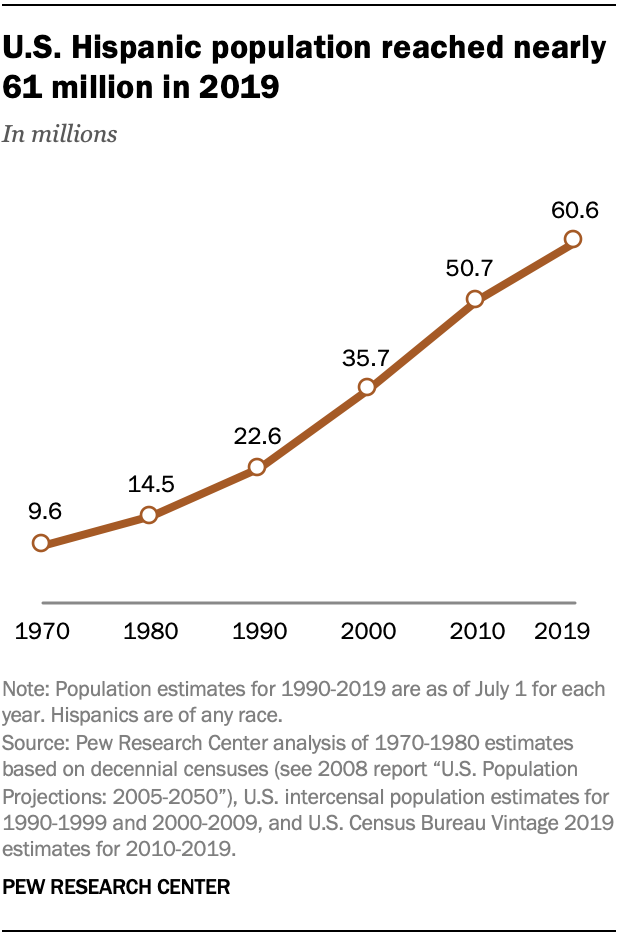
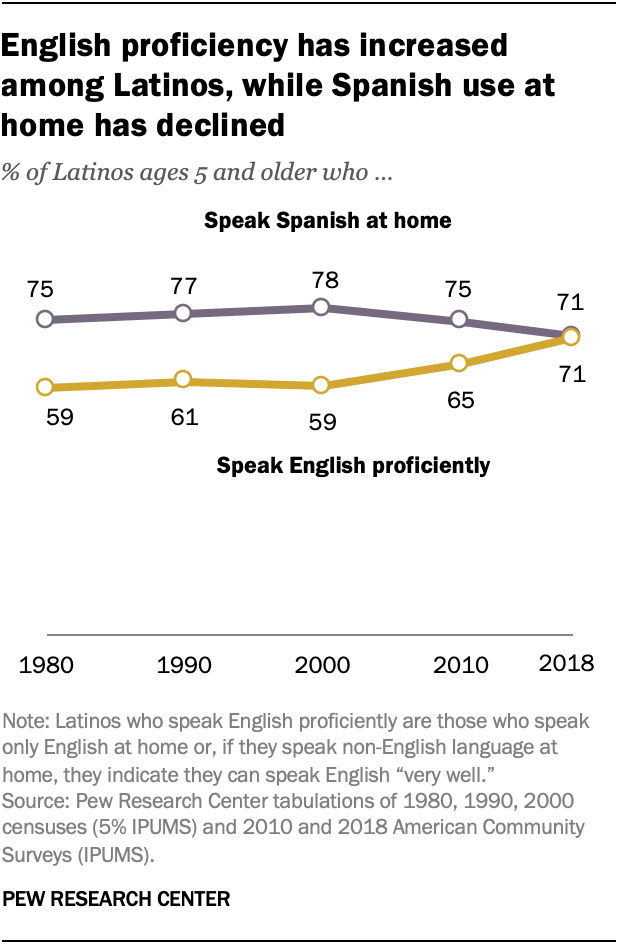
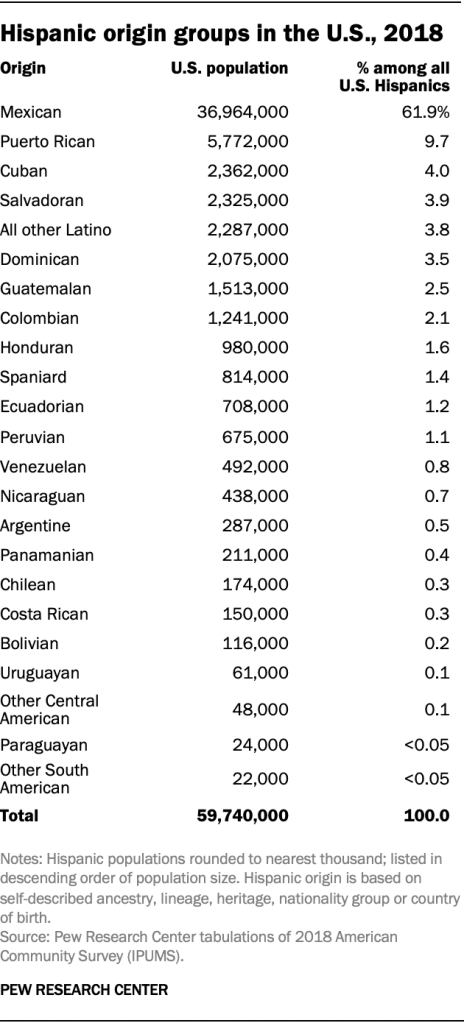
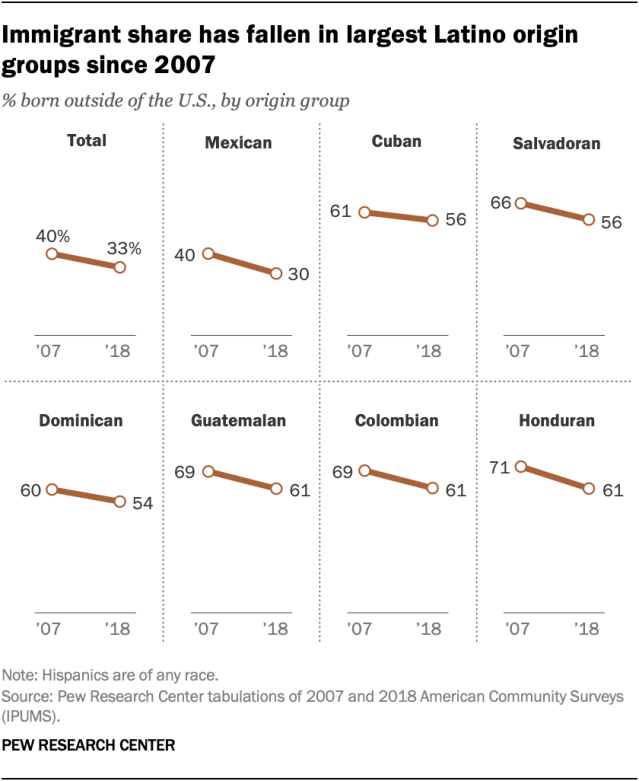
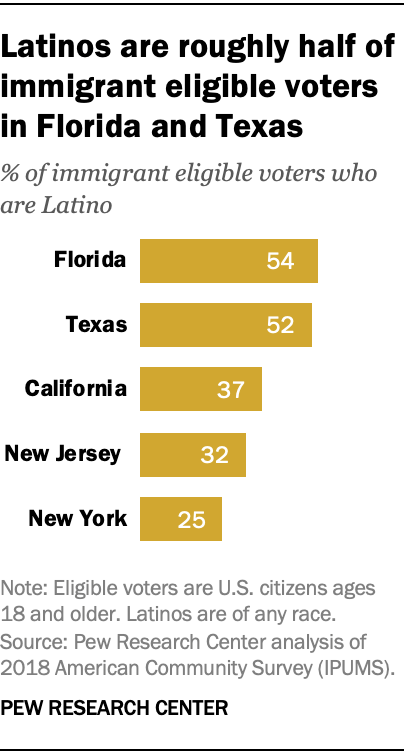















0 Response to "Facts about US Latinos for Hispanic Heritage Month - Pew Research Center's Hispanic Trends Project"
Post a Comment